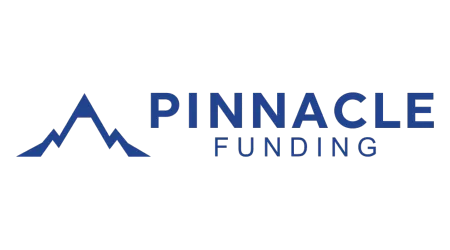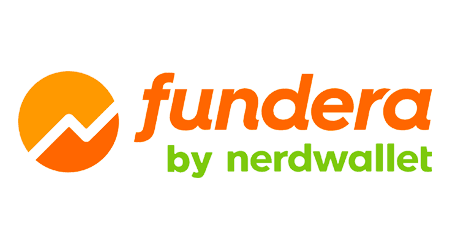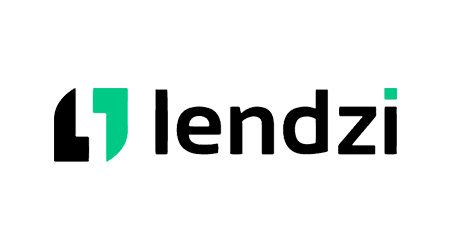Depending on the lender and type of financing, you can usually borrow anywhere from $1,000 to over $5 million. But not all businesses can qualify for loans on the higher end — and you might not want to if it’s more than you actually need.
How much can I borrow?
How much a lender offers and how much you can qualify for are often two different numbers. This depends on several factors, including:
- Revenue. You might need to bring in as much as 10 times the amount you want to borrow if you apply without collateral, depending on the loan amount and lender.
- Current debts. Your monthly debt obligations and expenses should leave enough room to comfortably afford repayments.
- Collateral. Businesses might overlook a lower revenue if you have the assets to back your loan. This can include the equipment or vehicles you’re using the loan to purchase.
- Personal guarantee. Many lenders require owners to pledge to repay the loan if the business defaults. You often have to show you can afford your share of repayments to qualify for the loan amount you want.
- Time in business. The largest loan amounts are typically reserved for established businesses that are less at risk of going under — usually, around three years in business is required.
- Credit score. Lenders typically only offer the highest loan amounts to business owners with good to excellent personal credit.
- Down payment. A down payment shows you have some skin in the game and offsets the risk for the lender. The larger the down payment, the more you might be eligible to borrow.
- Relationship with lender. Many lenders offer higher loan amounts to businesses they’ve already worked with — whether you’ve taken out a loan or have another financial product like a business checking account.
If you have a startup that’s less than six months old, you may want to consider a personal loan from a lender like Upstart instead of a loan for an LLC or other business entity. Business loans are largely based on revenue, while personal loan amounts are based on income. The best business lenders will also offer larger loan amounts to established businesses.
How much should I borrow?
Simply because you can borrow a certain amount doesn’t mean you should go up to that limit. The more you borrow, the more you’ll pay in interest and fees — and the higher your monthly cost will be. Calculate exactly how much you need to finance and limit yourself to that amount. If you can’t predict all of your costs, consider a line of credit.
Calculate business loan monthly payments
Use our business loan calculator to see how much a business loan will cost you each month before you apply. Enter the loan amount, APR and term you expect to see the monthly payment and total financing cost.
Business loan calculator
See how much you'll pay each month|
Your loan
|
|---|
| Loan amount |
|
$
|
| Loan terms (in years) |
|
|
| Interest rate |
|
%
|
Based on your loan terms
| Principal | $ |
|---|---|
| Interest | $ |
| Total Cost | $ |
Need business financing?
Compare business lending products for a wide range of needs, for both startups and established businesses.
How much do business lenders offer?
Different types of lenders offer different ranges of loan amounts, with banks offering the largest loans and microlenders offering the smallest. Keep in mind that applying for a large amount of funds will also extend the business loan application process.
Bank loans
Banks tend to offer the largest business loans of any provider — especially large, national banks. You can often borrow over $1 million, depending on your business’s finances, collateral and needs. Some larger banks don’t even have maximum borrowing amounts, while community banks might be more limited.
The average business loan from a large bank in 2017 was $493,000, while small banks lent an average of $146,000, according to data from the Federal Reserve.
SBA loans
You can borrow up to around $5 million if you get a loan partly backed by the Small Business Administration (SBA). However, getting even more is possible if you take out an SBA 504 loan for equipment or real estate — that program technically has no limit.
Online loans
The best online lenders typically offer financing up to $500,000, though you may be able to find providers that lend as much as $10 million. Larger funding amounts are typically backed by collateral, like equipment or vehicle financing.
Short-term loans
Typically, you can borrow up to $250,000 with a short-term business lender. These loans tend to be lower because your business has less time to pay them off — usually between three and 18 months. As with other types of business loans, larger amounts are typically only available with collateral.
Lines of credit
Business lines of credit typically run up to $100,000. However, it’s possible to get more through the SBA CAPLine program, which offers credit limits of up to $5 million.
Equipment and vehicle financing
Typically, you can borrow between 80% and 100% of the value of the equipment or vehicles you’re purchasing — usually up to $500,000 with a bank or online lender. You can often get more if you apply for an SBA loan.
Microloans
Microloans run from around $500 to around $10,000, depending on the provider. These are meant to fund small startup costs and are usually available to entrepreneurs and bad-credit borrowers. Unlike short-term loans, these typically are available through nonprofits and come with relatively low rates. Microlender Kiva even has a 0% interest program.
Invoice factoring
Selling your invoices to a third party can get you between 80% and 95% of the value of the invoices, depending on the lender. Typically, these are meant to cover cash flow gaps while you’re waiting for payment to go through on a large project and can run as high as $10 million.
Ask an expert: What do banks consider when deciding how much you can borrow?
The two key underwriting ratios at banks I’ve worked at over the last 20 years are the loan-to-value (LTV) ratio and the global debt service coverage ratio (DSCR).
LTV is the amount of the loan divided by the value of the collateral. For real estate, this could be as high as 80%. The DSCR is the amount of cash flow before debt payments divided by debt payments. The standard minimum for this is 1.25.
At the last institution I worked for, I approved pricing for any loan over $1 million that had a fixed rate for longer than five years. The most important ratio to receive good pricing is a high DSCR. The LTV only protects the bank if they have to foreclose.
Compare business loan amounts from different providers
Select the ranges for how much you want to borrow, your business’s revenue, time in business and your credit score to view your personalized options.
Compare other products
We currently don't have that product, but here are others to consider:
How we picked theseWhat is the Finder Score?
The Finder Score crunches 12+ types of business loans across 35+ lenders. It takes into account the product's interest rate, fees and features, as well as the type of loan eg investor, variable, fixed rate - this gives you a simple score out of 10.
To provide a Score, we compare like-for-like loans. So if you're comparing the best business loans for startups loans, you can see how each business loan stacks up against other business loans with the same borrower type, rate type and repayment type.
How to reduce the cost of a business loan
You have a few options to lower the cost of your loan — both in the short and long term.
- Shorten the loan term. A shorter loan term means there’s less time for debt to add up — but it’ll increase your monthly cost.
- Prequalify with other lenders. Different lenders use different criteria when coming up with your loan amount, rates and terms. Prequalifying with a few can help you find a low-interest business loan with lower costs overall.
- Improve your credit. Business lenders typically look at personal over business credit scores, so improving your personal credit score can help you qualify for a lower rate.
- Pay off other loans on time. Having a lower amount of overall debt and a longer history of on-time repayments can also help reduce costs.
- Provide collateral. Backing your loan with business assets in addition to a personal guarantee offsets the risk to the lender and can get you a better deal.
6 ways to qualify for more funds
From applying for government-backed financing to making a hefty down payment, here are a few ways to qualify for a larger loan:
- Put up collateral. Backing your loan with collateral poses less risk for the lender, making them more willing to offer larger loan amounts. You don’t necessarily have to fully back the loan — but the more, the better.
- Don’t skip the down payment. In general, the larger the down payment, the more you can borrow since it shows the lender you’re serious about the project.
- Pay off debts first. The fewer business debts you have, the more you’ll qualify for. Just make sure your lenders don’t charge prepayment penalties before you make any extra repayments.
- Improve your credit score. The higher your personal credit score, the less risk you pose to the lender and the more they might be willing to lend to you. Take steps to improve your score by checking your credit report for mistakes and paying down personal debts.
- Apply for an SBA loan. These loans tend to come in larger amounts than any other type of financing, since they’re backed by collateral, a government guarantee and a personal guarantee. However, they also have a high rejection rate.
- Hold off for now. If your business has been around for less than three years, waiting to borrow might be the best solution. Put off those big, risky expansion plans to focus on building a solid foundation and increasing your revenue.
Should I get an alternative business loan?
Alternative business loans like merchant cash advances and factoring might get you quick access to cash flow and more funding than a term loan or line of credit because of the way they’re structured. A merchant cash advance gives you an advance on your business’s future sales and can run as high as $10 million. Factoring involves selling your unpaid invoices at a discount and can also get you several million dollars.
But beware: Both tend to be much more expensive than your standard term loan and are generally best saved as a last resort.
Who is most likely to be researching business loan borrowing limits?
Finder data suggests that men aged 25-34 are most likely to be researching this topic.
| Response | Male (%) | Female (%) |
|---|---|---|
| 65+ | 1.91% | 0.83% |
| 55-64 | 3.66% | 2.58% |
| 45-54 | 9.33% | 5.16% |
| 35-44 | 14.08% | 8.30% |
| 25-34 | 22.59% | 9.23% |
| 18-24 | 15.16% | 7.17% |
Compare personal loans for startups
Personal loans can be an inexpensive alternative to startups that need funds to get you through those first few months — as long as you have income from a source outside your new business.
Narrow down your options by comparing the APR, minimum credit score and loan amount to find the right choice for your business. Select Compare for a side-by-side look at how these stand up to each other.
Compare other products
We currently don't have that product, but here are others to consider:
How we picked theseWhat is the Finder Score?
The Finder Score crunches 6+ types of personal loans across 50+ lenders. It takes into account the product's interest rate, fees and features, as well as the type of loan eg investor, variable, fixed rate - this gives you a simple score out of 10.
Bottom line
How much business lenders offer and how much you can borrow are two different numbers. But the one you might want to focus on is how much you actually need to borrow for your project to avoid taking on more debt than necessary.
You can compare business lenders and learn more about how it all works with our guide to business loans.
Frequently asked questions
Business loans by amount:
Top 10 best business guides
Explore the top business loan guides to help you along your business journey. From information on the best business loans on the market or your best startup loan options, to business loans that require little to no paperwork and more.
Ask a question
More guides on Finder
-
Can you get a no-doc loan for an LLC? (2025)
Compare lenders that offer fast, no-doc business lines of credit, MCAs, invoice factoring, short-term loans and more for LLC businesses.
-
Advance Funds Network Review: Multiple Loan Types but Few Disclosed Terms
A review of Advance Funds Network, a business lender that offers a variety of financing options to borrowers with a wide range of credit scores.
-
Best Construction Business Loans in 2025
Compare financing options for your construction company.
-
How to get a startup business loan with no money
Consider microloans, equipment financing, business credit cards and other ways to get small business funding when you don’t have money or revenues.
-
13 types of business loans
Explore 10+ types of business loans and other ways to get business funding.
-
Clearco Reviews: e-Comm Financing with Strict Requirements
Clearco provides short-term working capital for e-commerce businesses. Learn more.
-
Are PPP loans still available? No – PPP loan alternatives in 2025
Other SBA loans are still available and lenders are returning to business as usual.
-
Amazon Lending and other business loans for Amazon sellers
Restock inventory, market your brand and more with these financing options.
-
QuickBridge Review: Fast Cash for Small Businesses
Are QuickBridge loans worth the cost? Uncover what you need to know before applying.
-
NewtekOne Review: SBA Preferred Lender with Some Cons
Term loans, lines of credit and real estate loans for established businesses.





